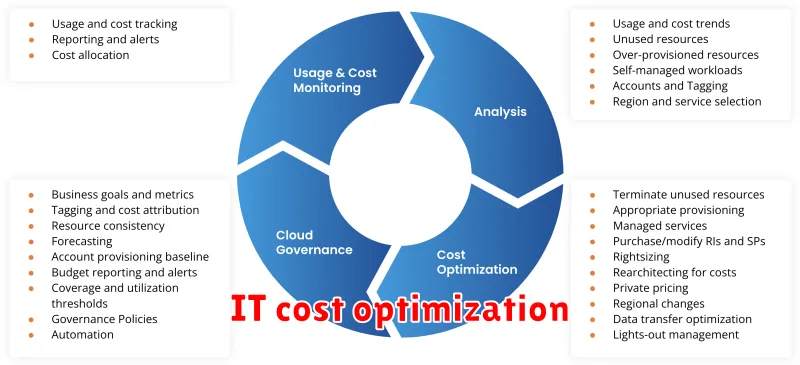In today’s competitive business landscape, optimizing IT costs has become a top priority for organizations of all sizes. The need to maximize efficiency and minimize expenses while maintaining top-notch performance is a constant challenge. But what if we told you that there are strategic ways to cut costs without sacrificing quality or functionality? This comprehensive guide, “Cutting Costs Without Cutting Corners: Your Guide to IT Cost Optimization Strategies,” will empower you with actionable insights and best practices to optimize your IT spending, freeing up valuable resources for growth and innovation.
From cloud migration and software licensing to hardware optimization and data center management, we’ll explore a wide range of strategies designed to help you achieve significant cost reductions. We’ll delve into the latest technologies and industry trends, offering practical advice and real-world examples to inspire your journey toward IT cost optimization. By embracing these strategies, you can gain a competitive edge, streamline operations, and unlock new possibilities for your business.
Understanding Your IT Landscape
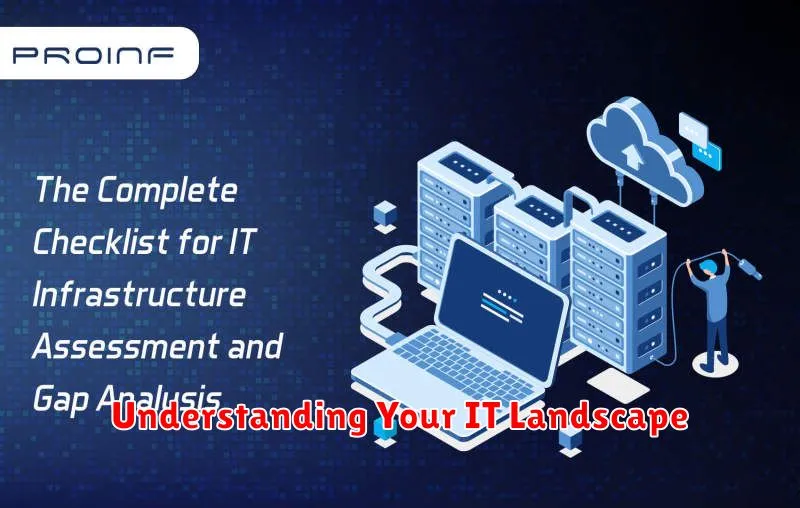
Before diving into cost optimization, it’s crucial to understand your current IT landscape. This involves a comprehensive assessment of your infrastructure, applications, and services. Think of it as taking stock of your IT assets, from hardware and software to cloud subscriptions and managed services.
Ask yourself these key questions:
- What hardware and software do you currently use?
- What cloud services are you subscribed to?
- What IT processes are in place?
- What are your IT spending patterns?
- What are your key IT challenges?
By gaining clarity on your current state, you can identify areas for potential cost savings and optimize your IT investments. This foundational understanding will be the basis for developing effective cost optimization strategies.
Cloud Computing: Migrate for Savings
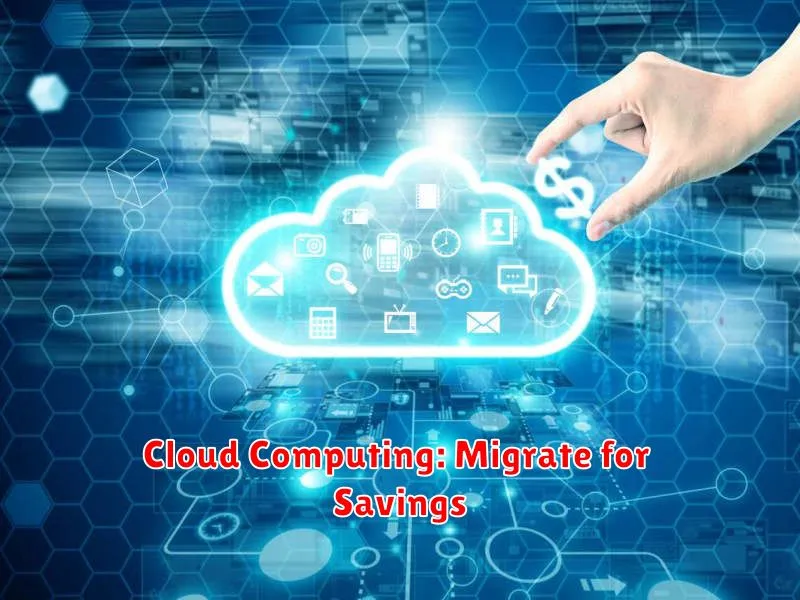
In today’s competitive business landscape, optimizing IT costs is paramount. One powerful strategy to achieve this is migrating to the cloud. By moving your infrastructure and applications to the cloud, you can unlock significant cost savings and enhance agility.
Reduced Hardware Costs: Unlike traditional on-premises solutions, the cloud eliminates the need for expensive hardware investments. You pay only for the resources you use, avoiding upfront costs and ongoing maintenance expenses.
Scalability and Flexibility: The cloud offers unparalleled scalability, allowing you to easily adjust your resources up or down as your needs evolve. This eliminates the need to overprovision, resulting in cost optimization.
Operational Efficiency: Cloud services streamline IT operations, automating tasks like provisioning, patching, and backups. This frees up your team to focus on strategic initiatives, boosting productivity and further reducing costs.
Pay-as-you-go Model: The cloud’s pay-as-you-go model aligns your IT spending with actual usage. You only pay for the services you consume, eliminating the risk of overspending on unused capacity.
Cloud migration can be a game-changer for businesses seeking to optimize IT costs without compromising performance or innovation. By leveraging the cloud’s inherent advantages, you can achieve significant cost savings while empowering your organization to focus on core competencies and drive growth.
Software as a Service (SaaS): Streamlining Expenses
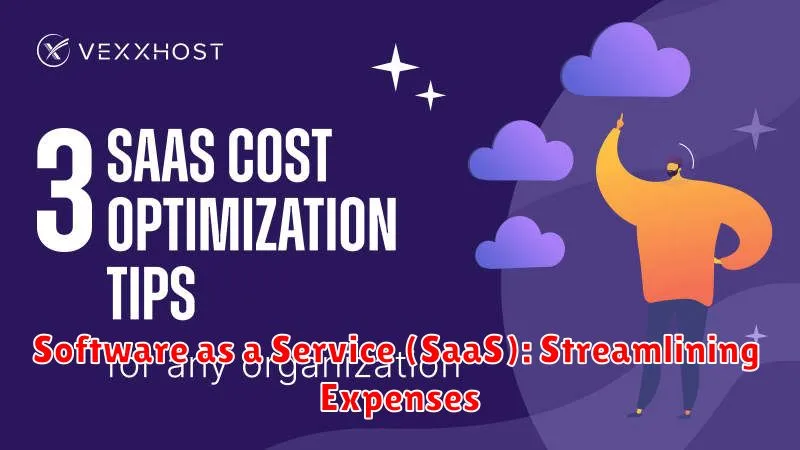
In today’s dynamic business landscape, optimizing IT costs is crucial for sustainable growth. Software as a Service (SaaS) emerges as a powerful tool for streamlining expenses and maximizing efficiency. By embracing SaaS solutions, businesses can significantly reduce their IT budget without compromising on functionality or performance.
Traditionally, businesses invested heavily in on-premise software, requiring substantial upfront capital expenditure and ongoing maintenance costs. However, SaaS models offer a subscription-based approach, eliminating the need for large upfront investments. Users pay a recurring monthly or annual fee, gaining access to the latest software updates and features without the hassle of installations or upgrades. This flexibility allows businesses to scale their IT infrastructure as needed, avoiding unnecessary expenses associated with over-provisioning.
Furthermore, SaaS solutions simplify IT management, reducing the need for dedicated IT staff. Cloud-based platforms handle all aspects of software maintenance, including updates, security, and backups. This frees up internal resources for more strategic initiatives, while ensuring uninterrupted service and data security.
By adopting SaaS solutions, businesses can streamline their expenses, boost productivity, and gain a competitive edge. Embrace the power of cloud-based solutions and unlock the potential for significant cost savings without compromising on quality or functionality.
Negotiating with Vendors: Getting the Best Deals

Negotiating with vendors is an essential part of any IT cost optimization strategy. Getting the best deals can significantly impact your bottom line. Here are some tips to help you negotiate effectively:
Know Your Needs
Before you start negotiating, understand your specific needs and requirements. Clearly define the scope of work, timelines, and desired outcomes. This will help you determine the best vendor and negotiate a fair deal.
Research and Compare
Don’t settle for the first vendor you find. Research the market, compare prices, and request proposals from multiple vendors. This will give you a better understanding of industry standards and help you identify the best value.
Be Prepared to Walk Away
Having a clear exit strategy can give you leverage during negotiations. If a vendor isn’t willing to meet your needs or offer a competitive price, be prepared to walk away and consider other options.
Focus on Value, Not Just Price
While price is important, remember to focus on the overall value proposition. Consider factors like experience, expertise, reputation, and support services. A slightly higher price may be justified if it translates to better quality or long-term savings.
Negotiate in Good Faith
Approach negotiations with a constructive and collaborative attitude. Be transparent about your needs and expectations, and be willing to compromise. This will help build trust and foster a positive relationship with the vendor.
Document Everything
Thoroughly document all agreements, including pricing, terms, and conditions. This will provide a clear record of the deal and protect both parties in case of disputes.
By following these tips, you can negotiate effectively with vendors and secure the best deals for your IT needs. This will help you optimize costs and ensure that you’re getting the most value for your investment.
Optimizing IT Infrastructure: Hardware and Software Efficiency
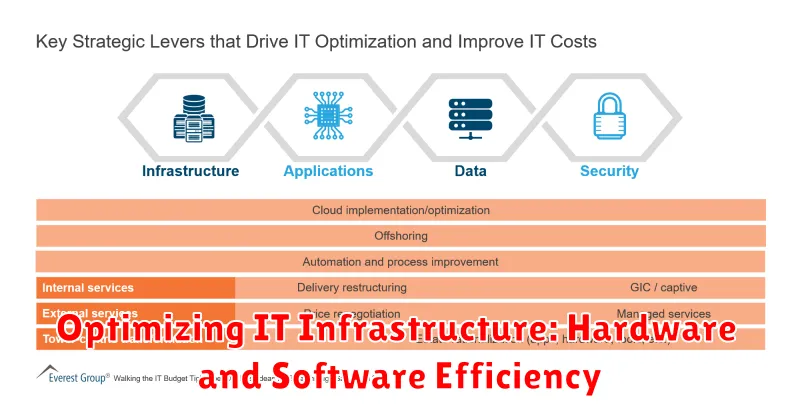
In today’s dynamic business environment, every dollar counts. Organizations are constantly seeking ways to streamline operations and reduce expenses, and IT infrastructure is a prime target for optimization. This article delves into the crucial area of hardware and software efficiency, presenting strategies for cutting costs without compromising performance.
Leveraging Hardware Efficiency
The foundation of an efficient IT infrastructure lies in the hardware. By optimizing hardware utilization, you can significantly reduce capital expenditures and operating costs. Consider the following:
- Server Virtualization: Consolidating multiple physical servers onto a smaller number of virtualized servers can lead to substantial cost savings in power consumption, space, and management.
- Hardware Lifecycle Management: Implementing a well-defined hardware lifecycle management strategy, including asset tracking, maintenance schedules, and timely upgrades, helps maximize the lifespan of equipment and reduce premature replacements.
- Cloud Computing: Utilizing cloud services for infrastructure and applications can offer flexible scalability and pay-as-you-go pricing models, reducing upfront investment and ongoing costs.
- Energy Efficiency: Implementing energy-saving measures, such as server power management and cooling optimization, can contribute significantly to cost reductions and environmental sustainability.
Boosting Software Efficiency
Software optimization is equally important. By leveraging the right software tools and practices, you can improve performance, minimize resource consumption, and streamline operations.
- Software License Optimization: Regularly audit software licenses to identify unused or underutilized licenses, negotiate better terms with vendors, and explore open-source alternatives.
- Software Updates and Patches: Keep software up-to-date with the latest security patches and updates to ensure optimal performance, prevent vulnerabilities, and reduce the risk of malware infections.
- Cloud-Based Software: Transitioning to cloud-based software solutions can provide access to scalable and cost-effective applications without the need for extensive in-house infrastructure.
- Automation and Scripting: Automating repetitive tasks and processes using scripting and automation tools can significantly improve efficiency, reduce human errors, and free up IT staff for more strategic initiatives.
Key Takeaways
Optimizing IT infrastructure for hardware and software efficiency is a continuous process. By implementing these strategies, organizations can achieve significant cost reductions while maintaining or even enhancing IT performance. Remember, the key is to strike a balance between cost savings and maintaining a reliable and secure IT environment.
Automating IT Processes: Reducing Manual Labor Costs
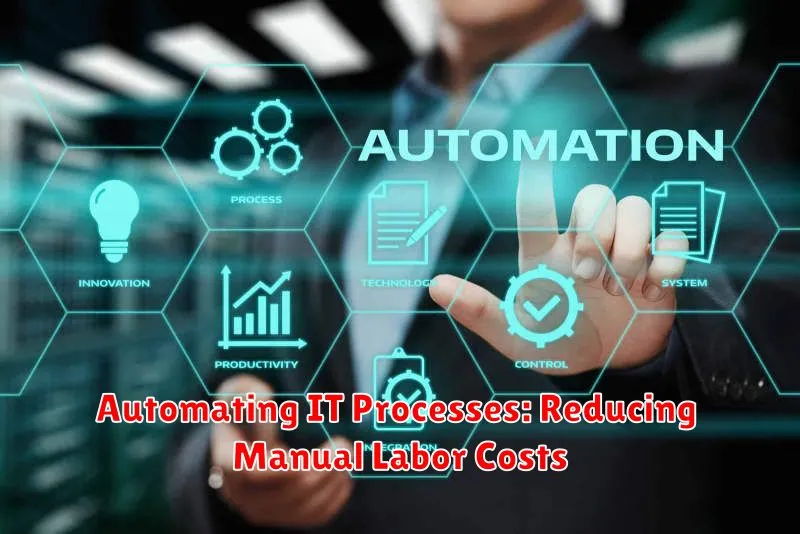
In today’s fast-paced business environment, optimizing costs without compromising efficiency is paramount. One powerful avenue for achieving this lies in automating IT processes. By leveraging technology, businesses can significantly reduce reliance on manual labor, leading to substantial cost savings and improved productivity.
Manual IT tasks are often time-consuming, prone to errors, and require dedicated personnel. Tasks such as password resets, software updates, and data entry can be streamlined through automation. This frees up valuable IT staff to focus on more strategic initiatives and complex problem-solving.
Automation solutions offer numerous advantages:
- Reduced labor costs: Automating repetitive tasks eliminates the need for manual labor, leading to direct cost savings.
- Increased efficiency: Automation processes execute tasks faster and more accurately, boosting overall productivity.
- Improved accuracy: Automation minimizes human error, ensuring data integrity and reducing costly mistakes.
- Enhanced scalability: Automating tasks allows businesses to handle increased workload without adding more personnel.
While implementing automation might require an initial investment, the long-term cost savings and efficiency gains far outweigh the initial expenditure. Businesses can start small by automating simple tasks and gradually expand their automation efforts. It’s essential to carefully assess the processes that can be automated effectively and choose the right automation tools for their specific needs.
Automating IT processes is a strategic move that can dramatically reduce manual labor costs, freeing up valuable resources and improving overall business efficiency. By embracing automation, businesses can unlock significant cost savings and pave the way for growth and success in the competitive landscape.
Energy Efficiency in IT: Lowering Operational Costs
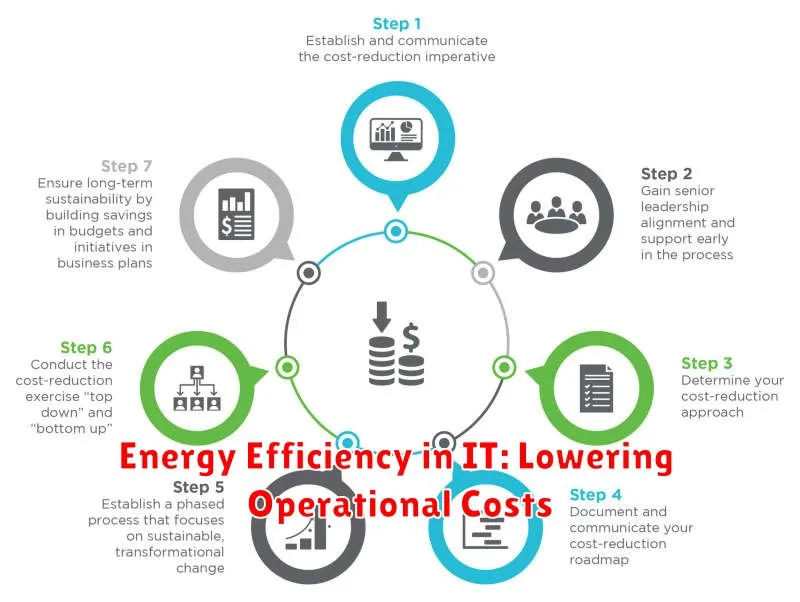
In today’s competitive landscape, businesses are constantly seeking ways to streamline operations and reduce costs. IT cost optimization is a key area where significant savings can be realized, and energy efficiency plays a pivotal role.
Energy-efficient IT practices can significantly reduce your organization’s carbon footprint while simultaneously lowering operational costs. By implementing these strategies, you can achieve substantial savings on electricity bills, cooling systems, and other energy-intensive components.
Key Strategies for Energy Efficiency in IT
- Server Virtualization: Consolidating physical servers into virtual machines reduces hardware requirements, minimizing energy consumption and cooling needs.
- Cloud Computing: Leveraging cloud services allows businesses to share resources and infrastructure, resulting in optimized energy utilization and lower overhead costs.
- Power Management: Implementing power management features on devices and servers can significantly reduce energy consumption during idle periods.
- Energy-Efficient Hardware: Choosing energy-efficient hardware components, such as servers, storage systems, and networking equipment, can lead to substantial savings over time.
- Data Center Optimization: Implementing best practices for data center design, including proper cooling systems and energy-efficient lighting, can significantly reduce energy consumption.
By embracing energy efficiency in your IT infrastructure, you can achieve tangible financial benefits while contributing to a more sustainable future. By implementing these strategies, you can lower operational costs without compromising on performance or reliability, achieving a win-win scenario for your business.
IT Asset Management: Maximizing Value and Minimizing Waste
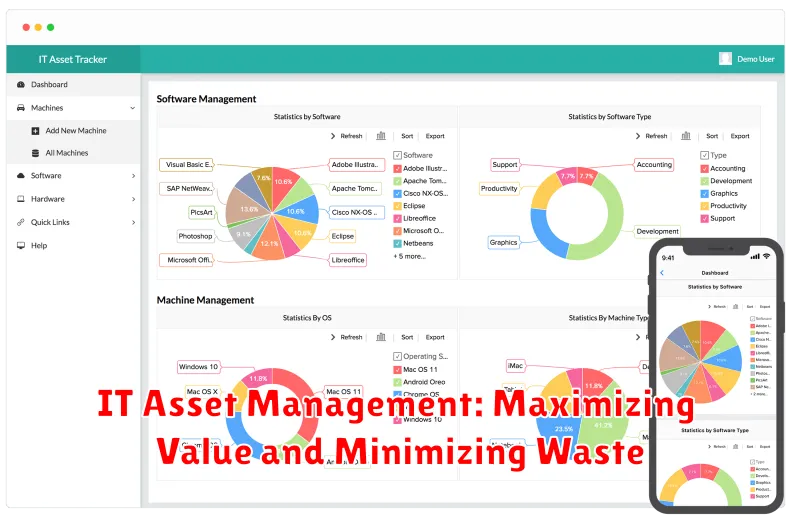
In today’s dynamic business landscape, optimizing IT costs is crucial for achieving sustainable growth and profitability. While cutting corners can seem appealing, it often leads to compromised quality, decreased productivity, and long-term expenses. Instead, a strategic approach to IT cost optimization is essential. At the heart of this approach lies IT asset management, a comprehensive practice that maximizes the value of your IT assets while minimizing waste.
Effective IT asset management goes beyond simply tracking hardware and software. It involves a holistic strategy that encompasses acquisition, deployment, utilization, and disposal. By implementing robust processes and leveraging technology, organizations can gain a clear understanding of their IT assets, optimize their usage, and identify areas for cost reduction.
Key Benefits of IT Asset Management:
- Reduced Hardware and Software Costs: By tracking asset lifecycles, organizations can avoid unnecessary purchases and maximize the lifespan of existing equipment. This can significantly reduce hardware and software expenses.
- Enhanced Security: Comprehensive asset management helps identify and mitigate security risks associated with outdated or unmanaged devices. It ensures that all assets are properly secured and updated, minimizing the potential for breaches and data loss.
- Improved Compliance: Many industries are subject to strict regulations regarding data storage, security, and asset disposal. IT asset management helps organizations maintain compliance by providing clear documentation and tracking mechanisms.
- Increased Productivity: By ensuring employees have access to the right tools and resources, IT asset management optimizes productivity and efficiency. It also helps prevent downtime caused by malfunctioning or obsolete equipment.
- Sustainable Practices: IT asset management promotes environmentally responsible practices by extending the lifecycle of assets and reducing electronic waste. This aligns with corporate sustainability goals and reduces the environmental impact of technology.
In conclusion, IT asset management is an indispensable tool for organizations seeking to optimize IT costs without compromising quality or security. By embracing a holistic approach to asset management, businesses can gain significant cost savings, improve productivity, enhance security, and achieve sustainable growth.
Outsourcing IT Functions: Cost-Effective Expertise
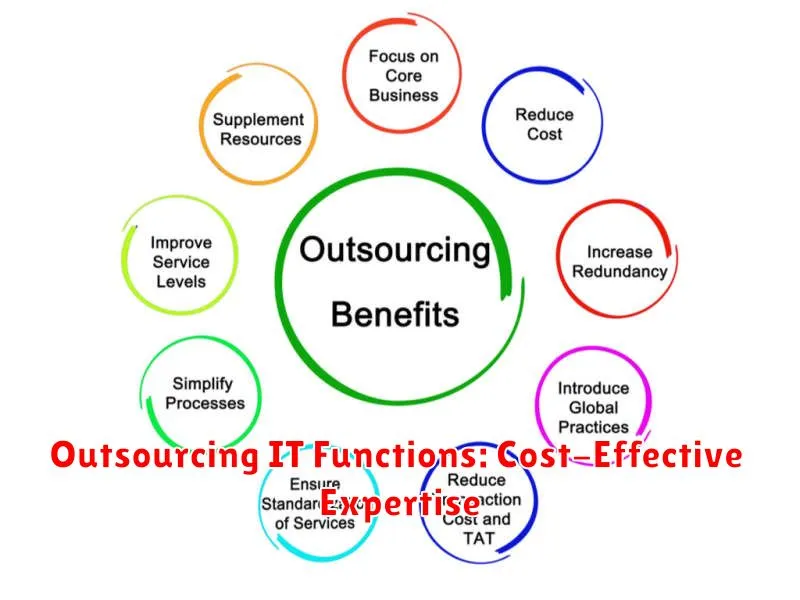
In the competitive landscape of today’s business world, optimizing costs without compromising quality is paramount. For many organizations, this means exploring innovative solutions for managing their IT infrastructure and operations. One such solution that has gained significant traction is outsourcing IT functions. This strategic move can offer a multitude of benefits, particularly in terms of cost-effectiveness.
By outsourcing, businesses can tap into a pool of specialized expertise and resources that they might not have in-house. This can be particularly advantageous for organizations that lack the necessary technical skills or financial resources to build and maintain their own IT infrastructure. Specialized IT outsourcing companies bring a wealth of experience, best practices, and cutting-edge technologies to the table, allowing businesses to leverage the expertise they need without incurring the costs of hiring and training their own team.
Moreover, outsourcing IT functions can lead to significant cost savings in areas such as infrastructure, software licenses, and ongoing maintenance. By leveraging the economies of scale offered by outsourcing providers, businesses can access technology and support at a fraction of the cost they would incur by managing everything in-house. This cost savings can be substantial, freeing up capital that can be reinvested in other areas of the business.
Furthermore, outsourcing allows businesses to focus on their core competencies, rather than getting bogged down in the complexities of IT management. By offloading these responsibilities to a trusted partner, businesses can concentrate on what they do best, leading to improved efficiency and productivity. This focus on core strengths can ultimately drive business growth and success.
In conclusion, outsourcing IT functions can be a powerful strategy for organizations seeking to optimize costs without sacrificing quality. By accessing specialized expertise, leveraging economies of scale, and freeing up internal resources, businesses can unlock the potential for significant cost savings and improved efficiency. This strategic approach can empower businesses to remain competitive and achieve their long-term goals.
Monitoring and Measuring: Continuous Cost Optimization

Cost optimization isn’t a one-time project; it’s an ongoing process that requires continuous monitoring and measurement. This ensures that your efforts are truly effective and that you’re not just cutting costs in the short term. Regularly tracking your IT expenses and performance metrics helps you identify areas for improvement and fine-tune your optimization strategies.
Here are some key aspects to monitor and measure:
- Cloud resource utilization: Monitor your cloud usage to identify underutilized or idle resources. This helps you right-size your infrastructure and avoid paying for resources you don’t need.
- Software licensing: Regularly audit your software licenses to ensure you’re only paying for what you use and avoid potential compliance issues.
- IT service performance: Track key performance indicators (KPIs) related to your IT services, such as uptime, response time, and user satisfaction. This helps you identify areas where optimization can improve efficiency and user experience.
- Energy consumption: Monitor the energy consumption of your IT equipment, especially in data centers. Implement strategies to reduce energy usage and minimize your carbon footprint.
Data visualization tools can be invaluable for monitoring and analyzing your IT cost data. They help you quickly identify trends, outliers, and areas needing attention. This data-driven approach ensures you’re making informed decisions and maximizing the impact of your optimization efforts.
Remember, cost optimization is not about sacrificing quality or performance. It’s about finding the right balance between cost savings and maintaining the effectiveness of your IT operations. By continuously monitoring and measuring your efforts, you can ensure you’re achieving your goals without compromising on essential services.
Employee Training: Reducing Errors and Downtime
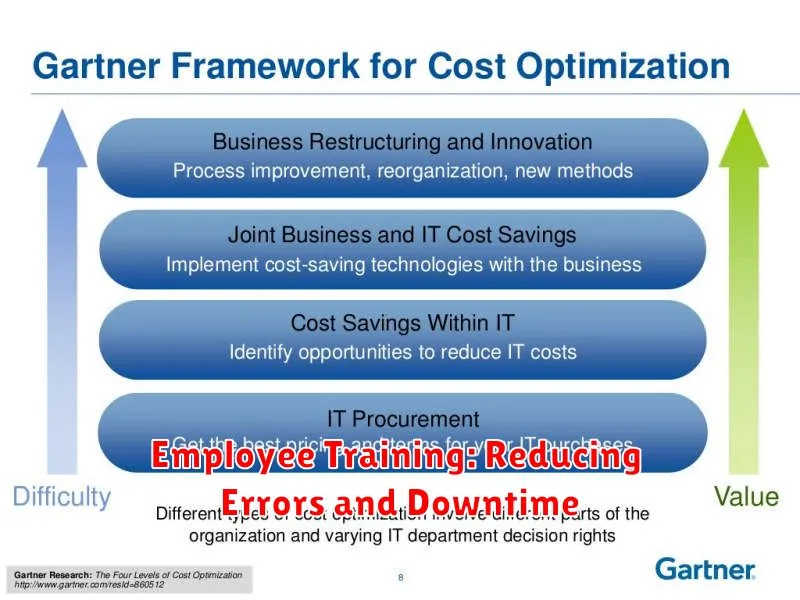
Employee training is a crucial aspect of IT cost optimization. By investing in training, you can significantly reduce the number of errors and instances of downtime, ultimately leading to cost savings. When employees are well-trained, they are better equipped to perform their tasks efficiently and accurately, minimizing the risk of costly mistakes.
Well-trained employees are less likely to require support or troubleshooting, which translates into reduced support costs. Furthermore, efficient workflows and minimized errors lead to increased productivity and less downtime. Downtime is a significant drain on resources and can result in lost revenue. Investing in training can significantly mitigate these risks and contribute to a more stable and efficient IT environment.

